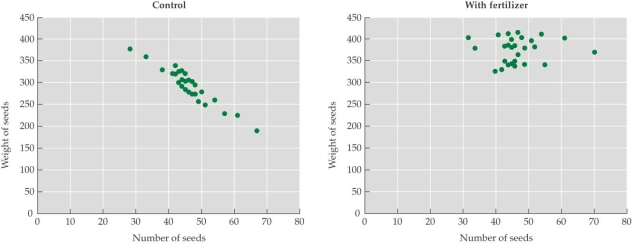Question 22
(Multiple Choice)
Refer to the figure.

- Seedlings of an annual plant were split into two equal treatment groups; in one group, extra fertilizer was provided, and in the other group (the control group), no additional fertilizer was added. The numbers of seeds and the average weight of the seeds from each individual plant were monitored, and these data were plotted (each point represents an individual plant). Which statement best describes the results of this study?
A) Trade-offs between seed size and seed number exist in both the control and the fertilizer groups, and these trade-offs are of roughly equal magnitude.
B) Trade-offs between seed size and seed number exist in both the control and the fertilizer groups, but these trade-offs are much larger in the fertilizer group.
C) A trade-off between seed size and seed number exists in the control group but not in the fertilizer group.
D) A trade-off between seed size and seed number exists in the fertilizer group but not in the control group.
Answer